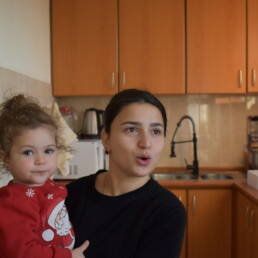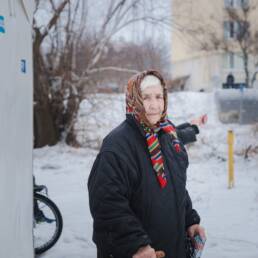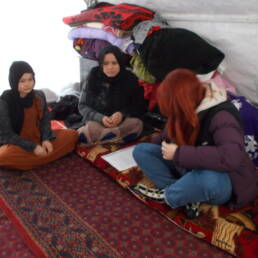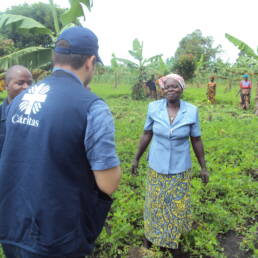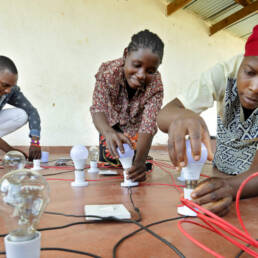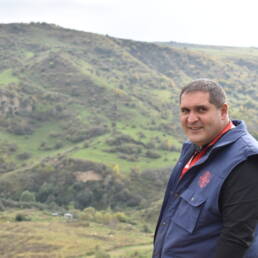More information
Alain Rodriguez
Communications Officer
Caritas Europa
It is with these words filled with a mix of anger, dismay, despair, and hope that an old man living in the refugee camp of Piétonville welcomed Caritas staff as they were delivering emergency shelter kits.
Two and a half months after being hit by a devastating earthquake, more than 1.3 million people are still waiting to have some place to live as reconstruction work is falling behind. Their already stressful experience has further been challenged by the arrival of torrential rains that are relentlessly battering the country and converting most of the refugee camps into immense mud pools.
The situation is especially grave in the Piétonville Camp, a former golf club hastily reconverted into a temporary camp for displaced people. Designed as a temporary solution, the camp is becoming hell on earth.
Overcrowded, unhealthy, dangerous…
The bad weather is aggravating the already overloaded sanitary conditions and increasing the risk of the spread of epidemics and illnesses, as latrines are spilling over, animals are wandering freely and heat and humidity are creating ideal conditions for germs to thrive.
These new conditions have pushed Caritas to focus on the distribution of emergency shelter kits (tarpaulins, ropes and nails) and the relocation of refugee camps outside Port-au-Prince. The Haitian government has already identified 5 temporary sites for the relocation of approximately 100,000 people.
Whilst world governments are gathering today in the UN building to discuss further help to Haiti (It is estimated that the reconstruction will cost 11,5 billions of dollars), anger among the people in the refugee camps is growing as the help that has arrived so far is not coping with the immense needs of the population.
Meanwhile, Caritas organisations in Europe continue to support the relief work of the Confederation, which is reaching some 200,000 people.
Caritas Internationalis General Secretary, Lesley-Ann Knight, visited the island in February and confirmed that Caritas’ aid is reaching the most vulnerable people in the country.
At a global level, Caritas Internationalis is advocating the cancellation of Haiti’s debt towards the IMF and other donors to give Haiti a proper chance to rebuild. In Europe, Caritas Ireland (Trócaire) is organising a gig to campaign for the cancellation of Haiti’s debt. Trócaire denounces the fact that most of the country’s debt is illegitimate as it stems from the brutal dictatorships that ruled the country in the past.
Background
A terrible 7.0-magnitude earthquake hit Haiti on Tuesday, 12 January 2010. The quake was the biggest seism to strike this island in 200 years. The catastrophe leaves behind a death toll of some 200,000 people, thousands of injured and a whole country in disintegration. Pivotal infrastructures have been completely wiped off, medical and food supplies are non-existent and the humanitarian aid is struggling to reach effectively the survivors as transport links are poor.
The situation, especially in Port-au-Prince, is nightmarishly. This densely populated town, capital of Haiti, was devastated by the quake and the two aftershocks that followed, as the epicenter was very close to the town. The sanitary situation is becoming alarming as thousands of dead bodies remain exposed on the surface and the temperatures are very high (around 30 degrees). Authorities and aid agencies are very worried about the dangerously increasing risk of disease.
The Caritas emergency team in place reports from their blog “The streets of Port-au-Prince are packed with people and rubble. People are wearing masks and hankerchiefs to cover their noses and mouths and those who haven’t had strong-smelling cream smeared under their noses (…) the smell of the dead in the heat is over-powering.”
The emergency team is working around the clock to provide first aid, tents and blankets to the survivors. It also gives support to run Caritas Haiti’s national operations.
European Caritas organisations have immediately reacted to the catastrophe, allocating resources and setting up fund raising campaigns. More information about their actions can be found in the list of links below.
This article was first published in Brussels, 18 January 2009.




